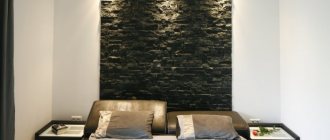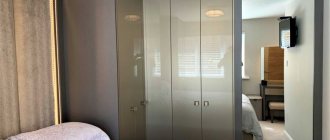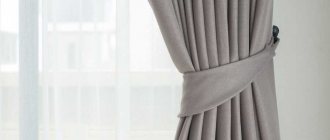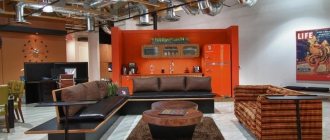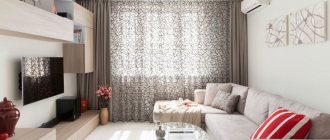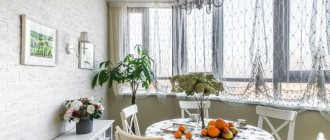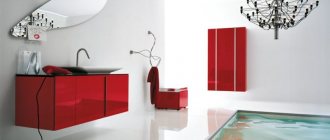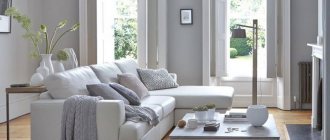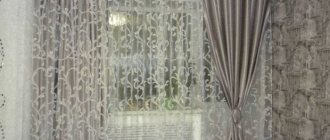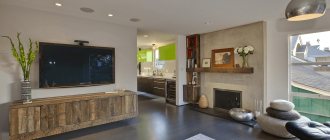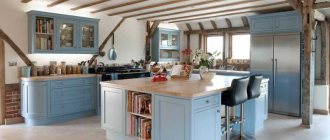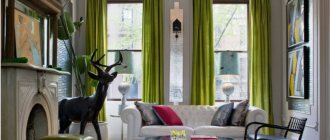Columns in modern rooms
In ancient times, columns served as supporting structures, and only later began to play a decorative role in the interior. The classic column consists of three parts:
- base - or base (lower part);
- trunk (central part);
- capitals (top part).
The bottom and top parts may sometimes be missing. The capital is the most decorative element of the column, decorated with elegant ornaments and regal bas-reliefs.
Modern columns can have the following design options:
- colonnades;
- paired columns (or united by one arch);
- semi-columns.
Paired columns are a classic option. They are usually located on both sides of the fireplace, window or staircase. Installation to opposite walls makes it possible to delimit the space, dividing it into functional zones. If they are united by an arch, this effect is enhanced.
Most often, paired columns have only a decorative function, participating in the design as an element that unites the space into a single zone, emphasizing the overall style.
Colonnades. This type of column is a great way to unobtrusively zone a space. If their location is determined at the construction stage, they can become a supporting structure, also carrying a functional load.
Half-columns - imitate columns protruding from the walls. The role in the interior is actually the same - creating a visual accent, zoning the room. It is very easy to frame a fireplace or window with them, fixing them against the wall, since they do not carry any functional load. They look no less expressive in the interior than traditional ones.
Interior design using columns can dramatically transform a room. With their help, it is easy to make a spectacular accent where it is needed.
Keep in mind that the shapes and sizes of columns significantly affect the perception of space. Tall, thin designs bring more grace to the interior, visually expand the space and increase the height of the room.
Thick ones, on the contrary, can visually make the room smaller. However, they give it fundamentality and create a feeling of strength and reliability.
Suitable...materials for making columns
Traditionally, column elements were cut out of stone - marble, granite, travertine. Local stone was used from nearby deposits, because heavy stone blocks are difficult to transport over long distances. The body of the column was assembled from several parts, the seams between them were tightly rubbed, the column looked monolithic.
Nowadays, decorative columns are almost never made from natural stone due to the high cost and labor-intensive manufacturing process. For solid structures that can withstand heavy weight, concrete is used. The prepared formwork is poured with sand-cement mortar, left until it hardens, then the formwork is removed. Monolithic columns are made directly on site simultaneously with the construction of the building.
For wooden buildings, elements made from solid logs are convenient and natural, although here you can also use a concrete structure followed by wood finishing.
Another “solid” material is gypsum, gypsum columns, heavy and quite expensive, they can be ordered by craftsmen who make gypsum stucco molding. Metal is suitable for minimalist interiors, it is quite heavy, and “noble” metal (chrome, nickel) is not cheap.
The most democratic option is polyurethane foam columns. This is a lightweight plastic material, easy to cut with a simple hacksaw, and glues well with special compounds or “liquid nails” type glue.
Manufacturers of polyurethane foam decorative products offer a huge selection of ready-made columns, separate bases, and capitals. You can select all parts of the column separately, then arrange them to your liking.
Columns made of this material must be painted, otherwise the element will “fall out” of the interior style.
An economical option for materials for the column is polystyrene foam and drywall. Products made from polystyrene foam have the same characteristics as those made from polyurethane foam, but are less dense and durable. They can be purchased ready-made.
Plasterboard columns are made on site. It’s very easy to make round, square, rectangular elements, complement them with arches, niches, and shelves. Drywall is a universal material that allows you to create the most unexpected designs. The surface of the drywall is puttied, and any finishing material is applied to the putty - paint, liquid wallpaper, Venetian plaster.
Columns and half-columns made of polyurethane foam, polystyrene foam, and plasterboard are relevant for the interiors of high-rise multi-story buildings and small apartments. They allow you to preserve the decorative nature of these architectural elements, eliminating the weight and massiveness of natural, concrete, and plaster analogues.
Art Deco
A style that combines features of baroque and antiquity, sometimes modern. The shape of the columns must be strict and the lines must be clear.
In the upper and lower parts they can be decorated with gypsum stucco (gypsum will successfully replace polyurethane). If we talk about color, white, the classic version, is preferable.
Not classic columns
Each culture had different types of columns, so you can consider the most memorable and popular options.
Egyptian columns
They are distinguished by their painting, which was applied to a flat surface. The first such household and interior items were made from papyrus, which was tied into a bundle and filled with liquid silt.
Ethnic style of columns in the interior
It is characteristically decorated with various elements of different nations. The decor of such columns is very diverse, because there are a lot of peoples, and so are the motives.
Rococo or Baroque style for columns
Today it is in great demand and popularity. Columns in this version are often used in luxury apartments or villas. A certain fragment of classical columns is present in this variation, but mostly these are curved lines and shapes that are characteristic of garlands, wreaths, sea shells, etc. A restless rhythm and increased dynamism of objects are clearly felt.
Art Nouveau columnar
This style features asymmetry, curved and smooth lines, floral patterns and motifs. This direction has given designers the opportunity to embody the most interesting and creative thoughts and ideas in the interior of the house with the help of columns.
High tech
This style requires unexpected and original ideas. For example, futuristic ones: illuminated glass columns that are filled with liquid with air bubbles moving upward.
The main recommendations are to use metal, create shiny surfaces that reflect light.
How to choose columns
Gypsum columns (
https://www.lepnina.ru/products/cat10/
) are capable of transforming a modern interior beyond recognition, the main thing is to choose the right shape and size of the products. To visually increase the height of the ceilings and add elegance to the interior decoration, choose thin and tall designs. Whereas thick columns, on the contrary, make the room smaller and create a feeling of grounding, strength and reliability.
The best option for decorating premises in the Baroque style would be columns with lush capitals, covered with gilding. In the loft style, square and rectangular products would be appropriate, while for art deco it is best to choose strict and laconic columns with clear shapes.
The Peterhof stucco workshop offers a wide selection of high-quality gypsum stucco moldings, which are made according to ready-made sketches and individual orders. You can view examples of work and order all types of stucco decoration in the new showroom, which opened in St. Petersburg, or on the company’s official website.
Interesting design ideas
In order for the column to successfully blend into the setting, becoming part of the whole picture, sometimes creative solutions are needed
- current technique is a combination of rough stone finishing with soft materials;
- columns installed nearby can easily be converted into a homemade shelving unit;
- using columns, you can create a niche to place a TV or music center;
- with properly equipped lighting, you can highlight a decorative niche inside where a painting, antique dishes or sculpture will be located;
- You can delimit the space even more effectively by placing a cabinet or rack between the columns.
Use your imagination to use this interior detail as profitably as possible. Modern possibilities allow you to decorate your home based on any taste preferences.
